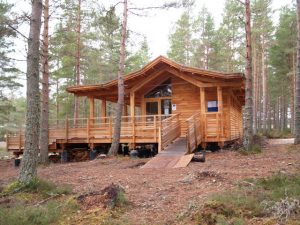When you hear the phrase “log cabins,” you might imagine something rustic way out in the middle of the woods with no running water or heat. And a large elk head mounted over a fireplace. While this does describe a type of log cabin that people might want to build, modern log cabins can be anything but “rustic.” They have complete indoor plumbing and electricity along with the cozy warmth of the natural world. They also represent a simpler, eco-friendly alternative to homeownership. Especially for people who are retiring and contemplating a lifestyle change.
The first reason why so many people are choosing to build log cabins is that they are inexpensive. Depending on the wood you use and the company you choose to work with, you can get a log cabin for less than a traditional house, and much faster, as well. Even if the initial frame of the cabin costs more, you save a ton of money on heating and cooling costs. Log cabins are 2-20% more energy-efficient when you use conventional cooling and heating because cabins are so well-insulated.

Why You Should Consider Log Cabin Living
Eco-friendly Effects of Cabin Living
Another great reason to own a log cabin is for the eco-friendly effects. Building a log cabin requires much less energy than a traditional house, and the process is very quick. Wood is a sustainable resource, and when you use materials like dead timber, the wood no longer emits carbon. Log cabins also last a lot longer than regular houses. So it isn’t as if log cabin companies are constantly chopping down trees to fulfill their quotas.
The last (and most important) reason why you should consider log cabin living is because log cabins offer a quiet, beautiful alternative to life in the suburbs or city. Log cabins are naturally sound-proof and provide a gorgeous, natural canvas that you can decorate to your liking. Location is also a huge plus. Log cabins are most at home close to woods and lakes in states like North and South Carolina, West Virginia, and anywhere near the Blue Ridge Mountains, a very popular area for log cabins.




